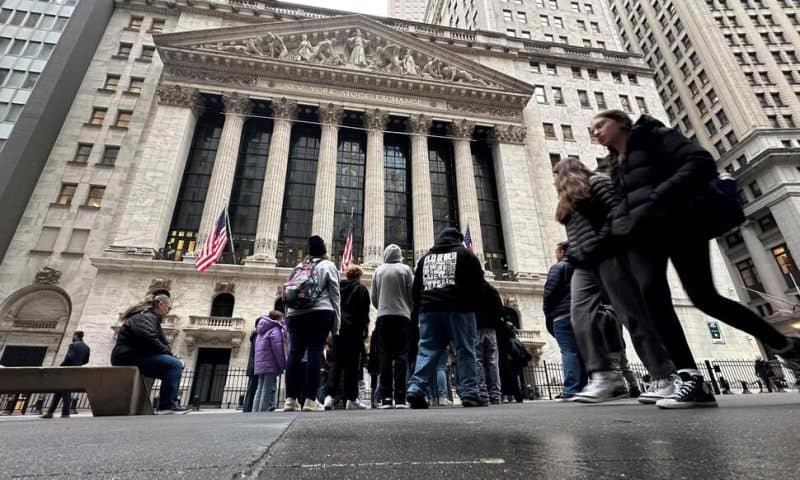Stocks ticked higher to begin a week packed with potentially market-moving news
NEW YORK — U.S. stocks ticked higher Monday to begin a week packed with potentially market-moving reports.
The S&P 500 rose 16.21 points, or 0.3%, to 5,116.17, coming off its best week since November. The Dow Jones Industrial Average added 146.43, or 0.4%, to 38,386.09, and the Nasdaq composite gained 55.18, or 0.3%, to 15,983.08.
This week will see about a third of all the companies in the S&P 500 reporting how much profit they made during the first three months of the year. That includes such heavyweights as Amazon and Apple. So far reports have largely been better than expected, with roughly half the S&P 500’s reports in, highlighted last week by Alphabet, Microsoft and others.
Domino’s Pizza added to the pile Monday, reporting stronger-than-expected results thanks to a second straight quarter of rising orders for deliveries and carryout. Its stock steamed 5.6% higher.
Tesla was also a big force pushing upward on the market and jumped 15.3%. Its CEO, Elon Musk, met with a high-ranking Chinese official as it tries to rev up sales in the world’s largest automobile market.
On the losing end was SoFi Technologies, which fell 10.5%. The financial services company reported better results for the latest quarter than analysts expected, but its forecast for net income in the current quarter fell short.
Solid earnings reports last week helped the S&P 500 rally to its first winning week in four. The companies in the index look to be on track to report a third straight quarter of growth in earnings per share, according to FactSet.
The stock market will need such strength to steady it following a shaky April. The S&P 500 fell as much as 5.5% during the month as signals of stubbornly high inflation forced traders to ratchet back expectations for when the Federal Reserve could begin easing interest rates.
After coming into the year forecasting six or more cuts to rates during 2024, traders are now placing many bets on just one, according to data from CME Group.
When the Federal Reserve announces its latest policy decision on Wednesday, no one expects it to move its main interest rate, which is sitting at its highest level since 2001. Instead, the hope is that the central bank could offer some clues about when the first cut to rates could come.
This week’s Fed meeting won’t include the publication of forecasts by Fed officials about where they see rates heading in upcoming years. The last such set of forecasts, released in March, showed the typical Fed official at the time was penciling in three cuts for 2024.
But Fed Chair Jerome Powell could offer more color in his press conference following the central bank’s decision. He suggested earlier this month that rates may stay high for longer because the Fed is waiting for more evidence that inflation is heading sustainably down toward its 2% target.
A report hitting Wall Street on Friday could shift policy makers’ outlook even more. Economists expect Friday’s jobs report to show that hiring by U.S. employers cooled in April and that growth in workers’ wages held relatively steady.
The hope on Wall Street is that the job market will remain strong enough to help the economy avoid a recession but not so strong that it feeds upward pressure into inflation.
Because inflation has been hotter than forecast and because the economy has remained so resilient, economists at BNP Paribas recently pushed out their forecast for the Fed’s first rate cut.
They had been forecasting a July move, but they said punting to September may prove to be uncomfortably close to the U.S. presidential election in November. So they’re now calling for the Fed to make its first cut in December.
Skipping September would not only help the Fed avoid looking like it’s trying to affect the election’s outcome, it would also give the Fed the chance to see if the election results in significant changes to policy that affect where the economy and inflation are heading, according to the BNP Paribas team, led by Andy Schneider.
“Even if the economy evolves so as to justify a cut by September, we think these risks likely outweigh whatever marginal economic benefits might come from” cutting just ahead of the election, they said.
In markets abroad, Japan’s stock market was closed for a holiday. But the Japanese yen continued to swing sharply after falling back to where it was against the U.S. dollar in 1990.
In other markets, stock indexes rose across much of Asia while remaining mixed in Europe.
In the bond market, the yield on the 10-year Treasury eased to 4.61% from 4.67% late Friday.

